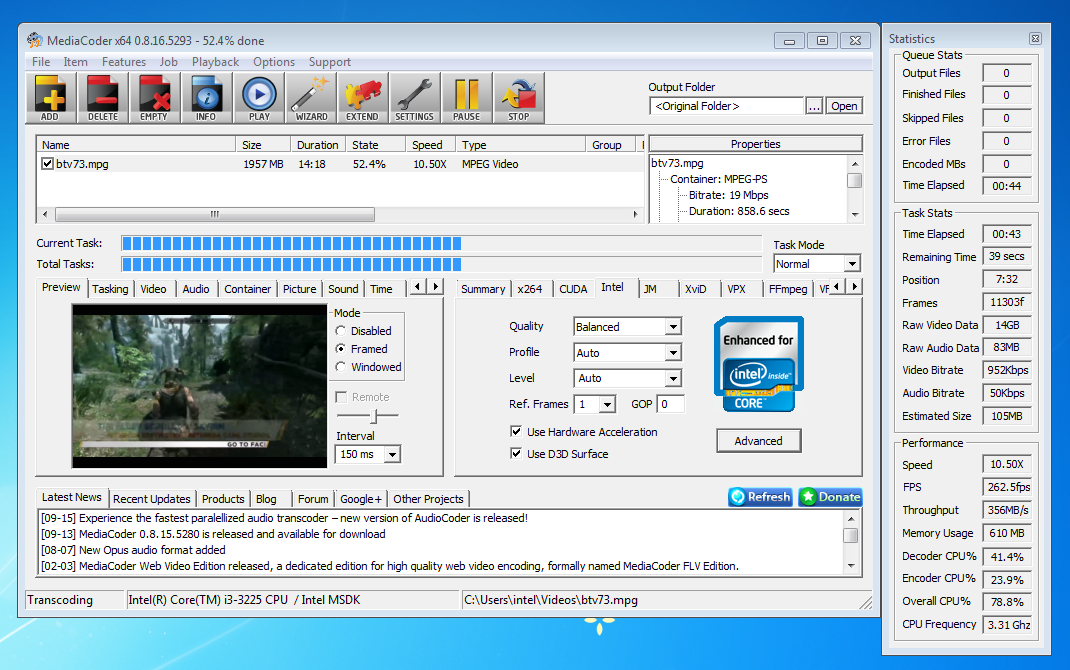
However, let’s not draw any conclusions just yet and take a closer look at the hardware components participating in our today’s tests. So, if we disregard the substantial price difference between these two solutions, then a comparison like that promises to be very interesting. Of course, the TDP of our AMD E-350 is only half of that, but we all know that Intel usually declares higher margin within their processors’ TDP than AMD. This new competitor is an LGA1155 Mini-ITX mainboard from Zotac based on Intel H67 chipset with the today’s most energy-efficient Sandy Bridge processor available today – dual-core Core i3-2100T with 35 W TDP. This time, however, we decided to pick a newer and more powerful rival for the promising AMD solution instead of a mini-ITX mainboard with a weak Intel Atom processor.
#INTEL I3 QUICKSYNC CRACK#
Therefore, we decided to take another crack at the nettop AMD Brazos platform with an AMD E-350 processor.

However, the practical implementation of this theory is something that poses serious concerns. Of course, Zacate will lose to them in pure computational performance, but that is exactly where Fusion steps in: low CPU performance should be balanced out by faster GPU. In other words, ION2 wasn’t, in fact, a fair rival to AMD Brazos.Īt the same time, AMD themselves do not consider Intel Atom processors to be competitors to their own Zacate CPUs, confidently challenging junior Arrandale and even Sandy Bridge models. Even though the CPU performance was almost the same in both cases, ION2 graphics was a bit slower, its energy-efficiency was a bit lower, and its price – a bit higher. However, when we compared ION2 closely against Brazos we discovered that second-generation ION platform with Intel Atom processor and Nvidia graphics was inferior to AMD solution. True, both these products showed very similar results in many aspects. As a result, even though the base CPU is obviously slow, the platform is still capable of playing high-definition video and even performing well in some applications, which can use shader pipelines of the graphics processor for computational needs.ĭuring our first Brazos tests we considered second-generation ION to be its closest analogue. If we assume that an integrated platform has four key features, namely CPU performance, GPU performance, energy-efficiency and price, then Brazos will be described as an energy-efficient and inexpensive solution with a weak CPU, but powerful graphics sub-system.


The main idea behind this approach is to dramatically increase the performance of the graphics components and to shift the focus from the traditionally primary parameter, such as processor’s computational capacity, towards the graphics component.ĪMD Brazos platform is an excellent illustration of a product created within this modified priorities system. But nevertheless Fusion attracts a lot of attention due to use of principally new approach to building integrated systems. Of course, we can’t say that these discussions are higher up the popularity charts than the debates on the new high-performance graphics or processors. One of the hottest topics discussed a lot in the computer world these days is undoubtedly AMD’s Fusion concept and its first hardware incarnation – the Brazos platform.


 0 kommentar(er)
0 kommentar(er)
